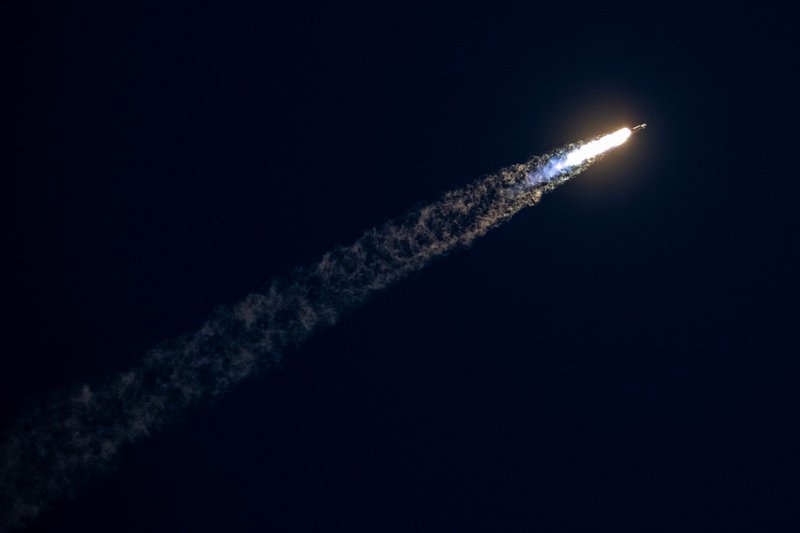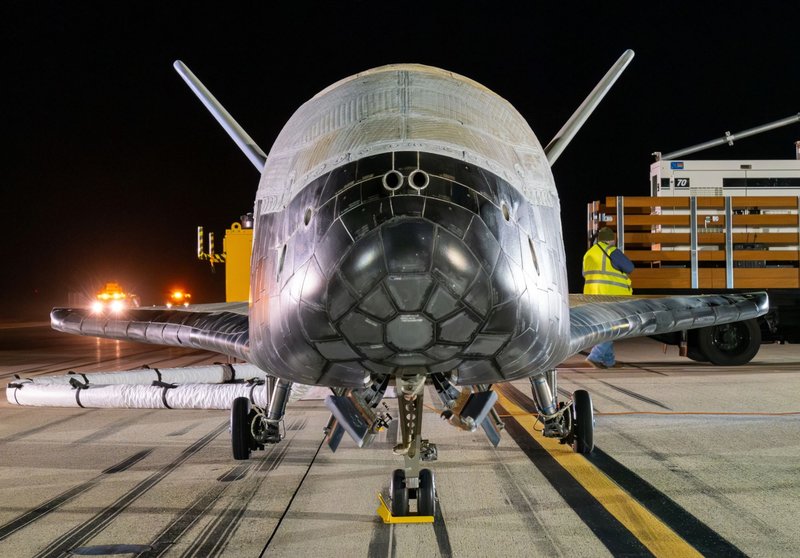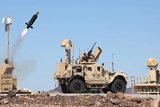Why is the US far behind Russia and China in the space warfare domain?
An Advanced Extremely High Frequency System. (Photo: US Space Force)
The US military appears not to have made significant progress in developing capabilities to counter anti-satellite weapons (ASAT) while Russia and China have been rapidly advancing in the domain. The absence of solutions and technologies to protect Washington’s space assets has placed the country in a dangerous position, US lawmakers stated.
In a recent hearing at the House Armed Services Committee, lawmakers alerted the risks the situation poses to the US.
Republican Representative Jeff Crank (Colorado) stressed that the US adversaries “are moving at full speed” in this domain.
Related Articles
Why the US would struggle to overcome Russia’s nuclear anti-satellite weapon
How has Russia progressed with the development of a nuclear anti-satellite weapon?
US Space Force to launch “hundreds of satellites” to better protect its assets from Russia and China
“This is a matter of great national security and importance,” Crank stated.
In March last year, the White House declassified the information that Moscow was working on a nuclear on-orbit ASAT weapon. The Russian programme was reported to have rapidly advanced in 2024 and passed the development phase.
In June 2024, the Pentagon confirmed that the Kremlin launched a low-Earth-orbit (LEO) satellite and positioned it in the same orbit as US government assets. At that time, US officials claimed that the Russian capability could be a counter-space weapon capable of attacking satellites.
Gen Stephen N. Whiting, head of the US Space Command, claimed it was “the single most threatening potential weapon” to US space architecture.
“Detonating a nuclear weapon on orbit would have indiscriminate effects, potentially disrupting the global use of space for security, economic and scientific purposes,” Whiting said.
Michael R. Turner, Republican representative from Ohio, pointed out that the detonation of a nuclear weapon in space “would render LEO unusable for up to a year”.
It “would be day zero, because the very next day we would not be able to count on the use of space force for national security, economic or scientific purposes,” Turner stated. “The very next day, we would have to assume that the use of space is no longer secure.”
From his perspective, “trillions of dollars and technology that we don't have would have to be expended assuming that space is no longer available to us”.
“This is the Cuban Missile Crisis in space, and [the nuclear ASAT weapon] cannot be permitted to go in space” he remarked.

Chinese anti-satellite capabilities
Meanwhile, Beijing has had ASAT weapons in its inventory at least since 2007 when it destroyed a weather satellite using kinetic capacities leaving debris orbiting the Earth.
In 2013, the Chinese government announced the launch of a suborbital rocket carrying a scientific payload which was considered an ASAT system by the international community.
Five years later, in 2018, Chinese state media announced a test with an exoatmospheric ballistic missile with the potential to be used in anti-satellite missions.
After that, the country continued to focus on other counter-space capabilities according to the US DoD 2024 Military and Security Developments Involving the People’s Republic of China report.
The paper stressed that the country has been working on direct-ascent anti-satellite missiles, co-orbital satellites, EW and directed-energy systems “to contest or deny another nation’s access to and operations in the space domain”.
Whiting highlighted that Beijing is currently developing on orbit, manoeuvrable counter space satellites to target space assets using dual-use technologies.
“China views space technologies as critical to its goal of becoming the dominant power in East Asia and a global superpower,” he stressed. “The People’s Republic of China seeks to rival the US in nearly all areas of space technology by 2030 and establish itself as the world’s preeminent space power by 2045.”
According to Whiting, since 2015, Beijing’s on-orbit presence has grown 1,000%, and “its sophisticated space and counter space systems” enhance its ability to secure territorial claims and project power.

US approach to counter enemy ASAT weapons
In FY2024, the Pentagon has invested more than US$5 billion investment in space and satellite facilities. Although it included multiple development and acquisition efforts, there was no programme of record to develop ASAT capabilities or solutions to counter them.
The Pentagon’s publicly disclosed strategy involves prioritising ways to protect and harden its on-orbit inventory, as well as smaller, less expensive LEO SATCOM assets and manoeuvrable systems.
“USSPACECOM is conducting analysis to determine which systems and missions require these enhanced capabilities and recommended timelines for their implementation,” Whiting claimed.
The X-37B Orbital Test Vehicle (OTV) programme is an example of this approach, with the reusable robotic spacecraft being operated in space experimentation and technology testing.
In 2024, the US Space Force (USSF) showcased the OTV’s aerobraking manoeuvre capacity by bridging multiple orbital regimes. In March, the branch announced its seventh successful mission with the X-37B.
It “demonstrates precisely the kind of operational flexibility and manoeuvrability that future systems must possess”. Whiting highlighted.
“Such capabilities are critical to avoiding operational surprise and enabling innovative operational concepts,” he added.
The US military has been also conducting experiments under the DoD Test and Evaluation Threat Resource Activity (TETRA).
The Director, Operational Test & Evaluation FY2024 Annual Report stated that TETRA defined a roadmap to close test capability gaps for the evaluation of US space systems’ resiliency against emergent threats.
“The roadmap led to demonstration of progress on potential counter space EW threats and radio frequency-enabled cyber threats to satellite communications and satellite telemetry, tracking and command,” the paper noted.
More from Air Warfare
-
![How do we detect and defeat enemy drones?]()
How do we detect and defeat enemy drones?
Learn about the portfolio of sensors and effectors for the complete counter-UAS mission at Raytheon, an RTX business.
-
![BAE Systems lauds counter-UAS drone progression with live fire trials]()
BAE Systems lauds counter-UAS drone progression with live fire trials
The US-based tests successfully demonstrated the first live trial of a precision guided missile from a modified TRV-150 drone which destroyed both aerial and ground targets.
-
![India readies private sector push as AMCA moves towards 2028 prototype]()
India readies private sector push as AMCA moves towards 2028 prototype
India’s stealth fighter ambitions gain fresh momentum as HAL opens the door to private sector involvement in AMCA Mk1A structural assembly, with strategic support growing for next-gen propulsion and sensor technologies.
-
![BAE Systems reveals new GCAP demonstrator design with plans to fly by 2027]()
BAE Systems reveals new GCAP demonstrator design with plans to fly by 2027
A key part in the trinational Global Combat Air Programme (GCAP), this is the first crewed supersonic aircraft demonstrator to be built and developed in the UK in more than 40 years.
-
![Kratos Defense makes European CCA push with Airbus partnership]()
Kratos Defense makes European CCA push with Airbus partnership
Kratos’ XQ-58A Valkyrie will be equipped with an Airbus-made mission system to be offered as a ‘European’ collaborative combat aircraft option to the German Air Force.
-
![Anduril’s Barracuda-100M completes latest successful test flights]()
Anduril’s Barracuda-100M completes latest successful test flights
The munitions variant of the Barrauda-100 autonomous air vehicle is being tested for the US Army’s High-Speed Manoeuvrable Missile (HSMM) testbed programme, with further flight tests expected in 2026.























